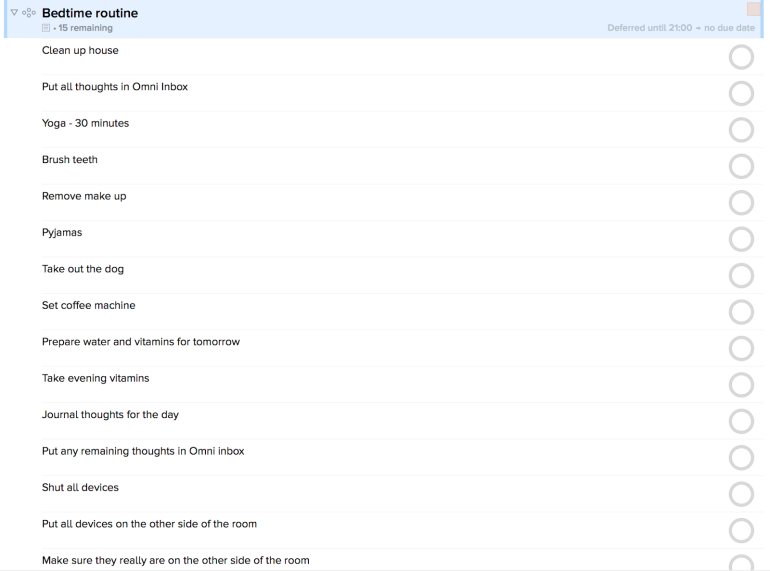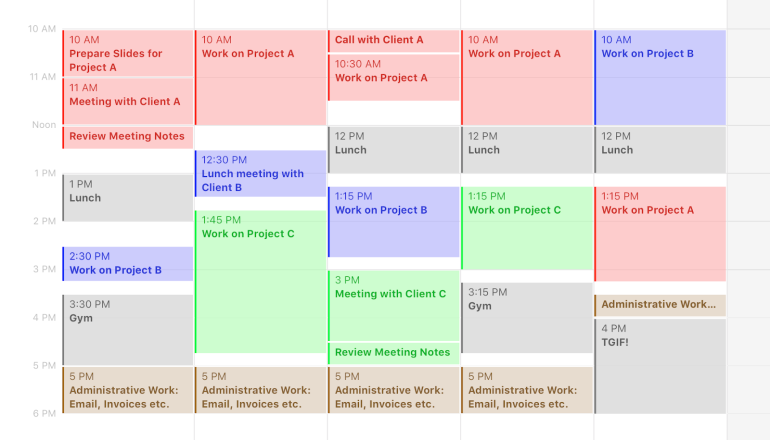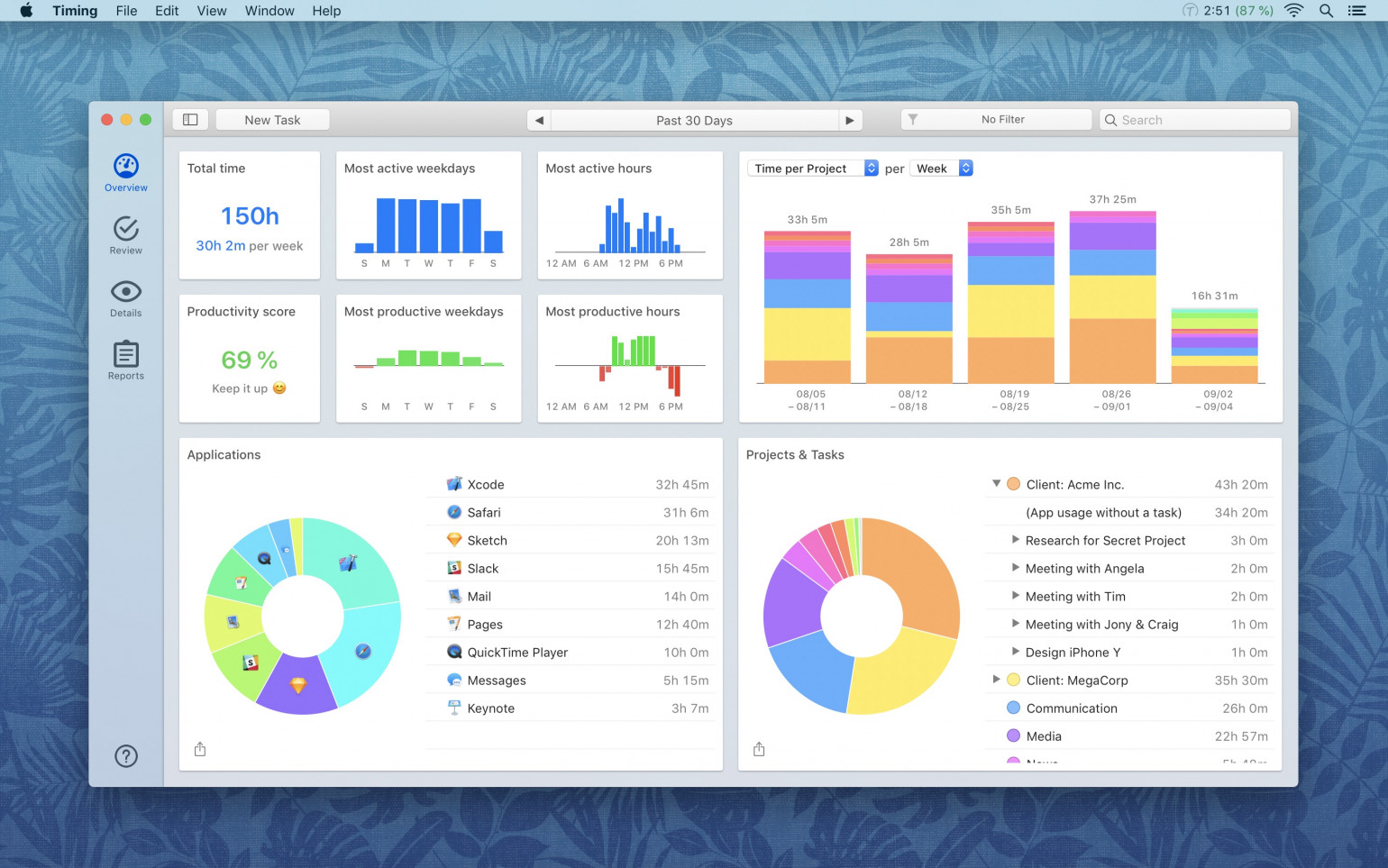How to Structure Your Day Using Time Tracking Techniques

Want to be more productive, have a better work-life balance, and reduce your stress levels? You need to start structuring your day.
Getting real structure into your day, and sticking to it, isn’t something that comes easily. At least, not for most people out there. Without a doubt, though, structure is something we need more of. From entrepreneurs to studies in childhood development, we know the importance of self-discipline when it comes to delayed gratification. Without structured time management, hitting goals in our personal and professional lives can be near-impossible, something we looked at in more detail in our recent article on effective goal setting.
If you’ve read that article already, you’ll know that it finished with some actionable tasks regarding why you want to time track, and what you hope to achieve from it. Now we’re going to talk about ways you can structure your day. Not one for long blocks of time? Need lots of play? Focus better when you’re tackling something large? Don’t worry, this isn’t a cookie-cutter plan for you to follow; it’s a way to create structure for your day in a way that is effective for who you are.
Create Your ‘Ideal Day’ with Detailed Routines
A good place to start when working out how your day should be structured is by planning your ideal day. The day where you can have 100% control over how it goes. That means including personal development time, work time, and downtime. Creating rituals and routines not only helps you be more productive, it frees the mind up to focus on what it should be doing: being creative. Planning morning rituals in detail, right down to brushing your teeth, can start you off on the right foot for the day by feeling accomplished. With more research to support this theory appearing all the time, and more mention of morning rituals in articles by successful entrepreneurs, it’s worth making one to fit into your plan.
Evening rituals are well worth making too, as they aid a good night’s sleep. My own evening ritual takes account of my history with insomnia and has been designed around sleep hygiene, something worth doing even if you don’t have problems sleeping. I use OmniFocus for mine, as it’s easy to check off and reappears the following day. This makes time management a breeze, as I only have to write out my rituals once.

Rituals like these aren’t meant to be rigid; they can evolve and grow over time as you find what works for you. In my case, this takes the form of scheduling a second thought-dump into Omnibox, as I know that additional thoughts tend to come up between the first one and going to sleep. When everything is ticked off, it’s a sign to my brain that it’s time to sleep.
Now Plan Your Actual Work Day, or Week
Once you know what you want your day to look like, you can plan your week ahead as it’s set to happen. This might mean that the blocks of time you’ve laid out to be the same every day need moving around, so you can restructure as necessary to make it realistic for what you need to accomplish.

Having a detailed plan is ideal for successful time tracking, as it makes it far easier to correctly work out what you were doing if you forget to log time. If you know what you were going to do at a given time, it’s much easier to reconstruct what you were actually doing. Once you have your week planned, you can set alerts for calendar events. Not only does this remind you to start and stop doing things, it also means you don’t have to think about what you’ll be doing in an hour — you can focus on what you’re doing in the moment.
Some good rules of thumb when planning your week are:
- Keep a To-Do list. Having a To-Do list (I use OmniFocus, but something simple like notes or Apple reminders can work too) not only helps keep track of what to work on next, it also lets you check what you did before. Like planning your week in a calendar, this lets you reconstruct what you have been working on.
- Block off “Admin” time. Having a fixed time slot to work on your business lets you better focus on your clients’ work the rest of the time. This is also an opportunity to review the time your tracked during the day. Separating admin time and emails is a good strategy if you have a lot of one or the other.
- Resist the temptation to block out 100% of your time. Things will doubtless run over, or appear and need dealing with. If you schedule all your time with tasks, you’ll invariably be running over by several hours every evening.

Track Your Week with a Time Tracking App, Then Compare Your Results
Once you know what you want your week to look like, and what your week is supposed to look like, you can track what your week actually looks like. By far the easiest way to do this is with an automated time tracking app like Timing. When you review, there are several things to look out for.
- What can be eliminated? Tasks that can be delegated, or that aren’t making you happy, or that are pure procrastination. These need to go.
- What weren’t you realistic about? When Taylor Pearson tracked his week and compared the ideal with the reality, two things stuck out as taking up far more time than anticipated. The amount of time he spent doing work that he should be delegating, and the amount time spent on his relationship. You can tell which one he set about reducing.
- Where aren’t you focused? Were you multitasking anywhere? Not only does multitasking kill your productivity, it also makes tracking your time a nightmare and messes up your plan.
Focus on one task at a time and reduce distractions as much as possible. If something comes up during the day, simply put it on your To-Do list and come back to it later. If you break focus a lot, use the Pomodoro method to break your time down into small amounts. If it keeps happening, switch up your routine. Maybe doing something at a specific time of day just doesn’t work for you?
After several weeks of reviewing your ideal week vs. your actual week, you should find that they look much more similar. You’ll find it’s starting to pay off in more ways than one, as taking control over your time and feeling accomplished is bound to have an effect on your self-worth, and your happiness levels.
Use Historical Data to Design Realistic Time Blocks
One of the most powerful aspects of consistent time tracking is the wealth of historical data you accumulate over time. Rather than guessing how long tasks will take or creating idealistic schedules that consistently fall short, you can use your actual tracked time to design realistic time blocks that work with your natural work patterns.
Timing automatically captures comprehensive data about how you actually spend your time across all your Mac applications and websites. This historical information becomes invaluable when planning future time blocks. For example, if your tracking data shows that you consistently spend 90 minutes on email management each morning instead of the 30 minutes you initially planned, you can adjust your schedule accordingly.
When designing time blocks based on historical data, look for patterns in your most productive hours. You might discover that you’re naturally more focused on writing tasks between 9-11 AM, or that administrative work flows better in the afternoon when your creative energy is lower. This data-driven approach to time blocking removes the guesswork and helps you work with your natural rhythms rather than against them.
Your historical data can also reveal hidden time drains that aren’t immediately obvious. Perhaps you’re spending more time than expected switching between applications, or certain types of meetings consistently run over their scheduled time. By identifying these patterns, you can build buffer time into your schedule or restructure your approach to these activities.
The key is to review your tracking data regularly and adjust your time blocks based on what actually happened, not what you hoped would happen. This iterative approach to scheduling creates increasingly accurate time estimates and more realistic daily structures that you can actually stick to.
Time to Take Action
Today’s action items are simple. Start by creating your ideal week. This could be in a spreadsheet or directly in your calendar app, and then compare it to how you actually spend your time. Use your time tracking data as a guide: instead of guessing, rely on your real patterns to design time blocks that reflect your natural rhythms.
Plan working hours, but make sure they’re working hours that truly work for you and your life. Break up longer tasks with the Pomodoro technique, and remember to include all aspects of your day, from waking to sleeping. The more detail you can go into, the more likely you are to follow through. And the more accurate your future adjustments will become.
This isn’t about perfection on the first try. Review your historical data regularly, refine your time blocks, and iterate. Over time, you’ll build a schedule that balances productivity with fulfillment.
This isn’t a habit yet, though, so if you don’t instantly develop new morning and evening rituals that stick, don’t worry. In the next article we’ll be talking about how to set habits that stick, and improve your work productivity and your home life.
Want to start tracking your day right now, while you’re feeling motivated? You can download our free trial of Timing here.
